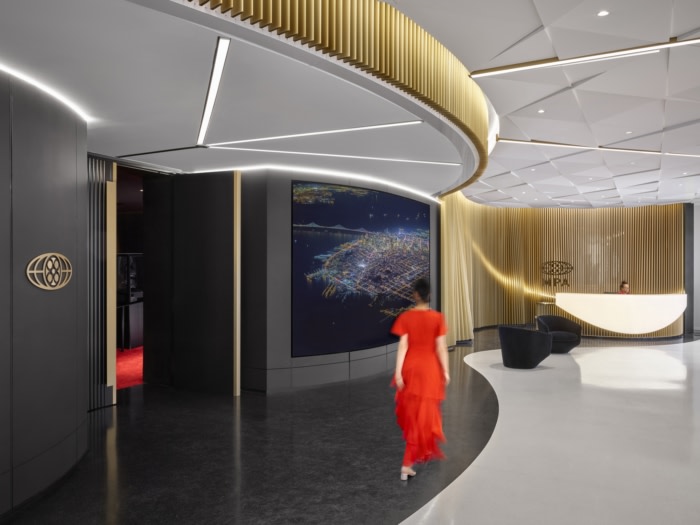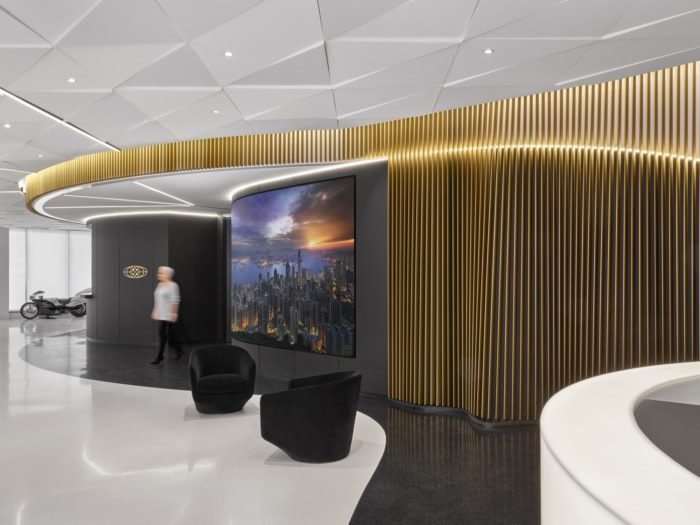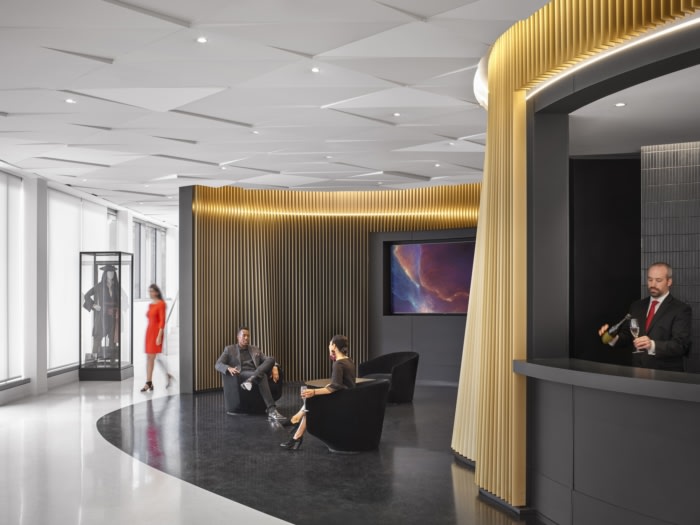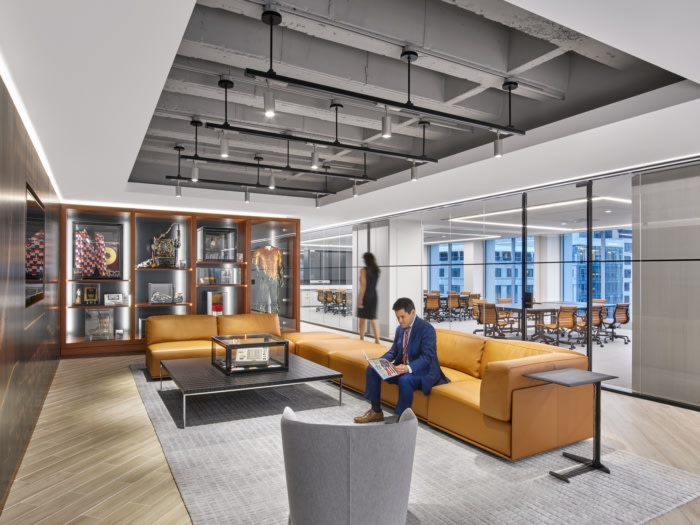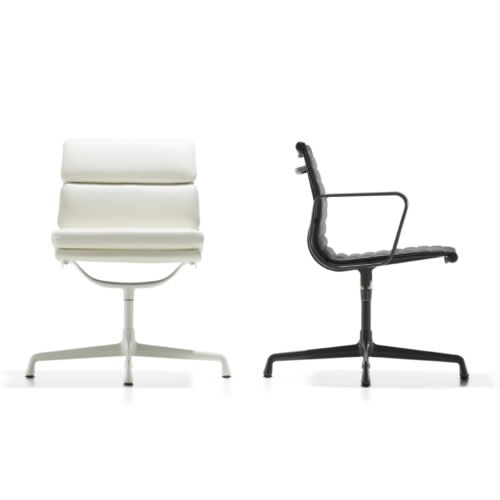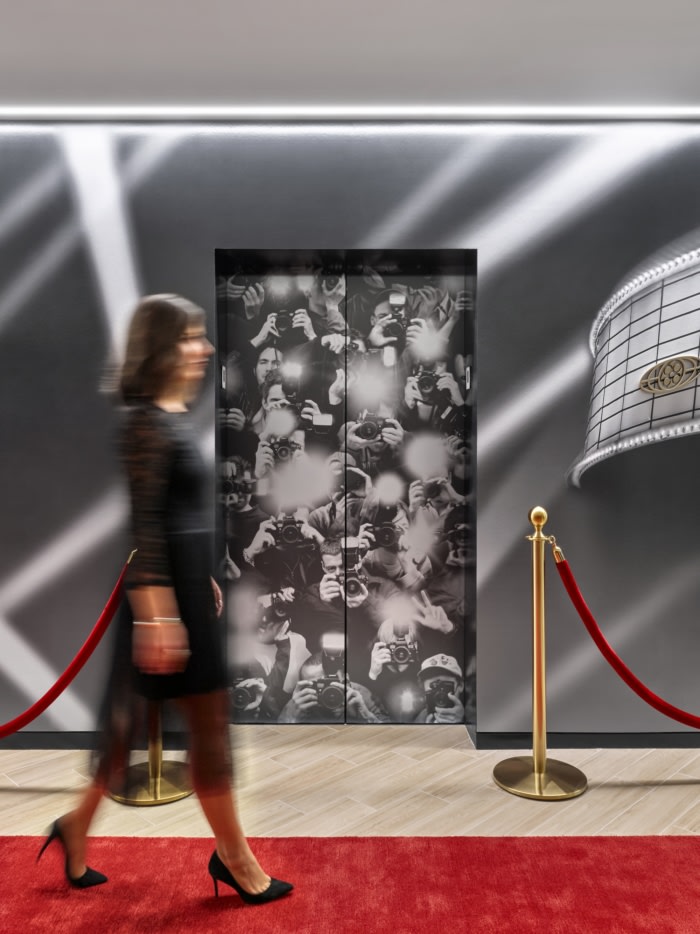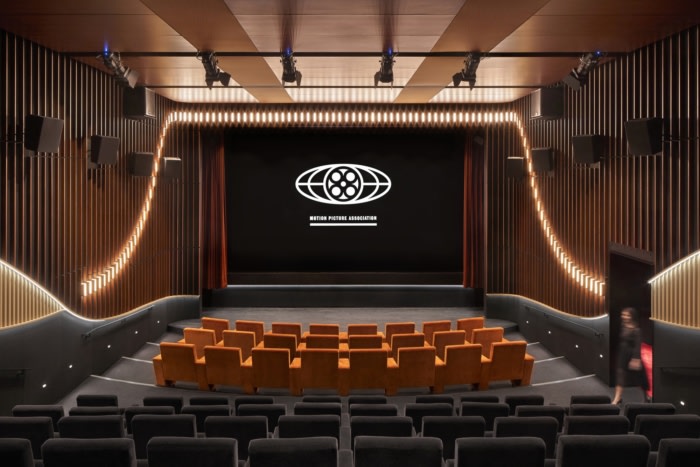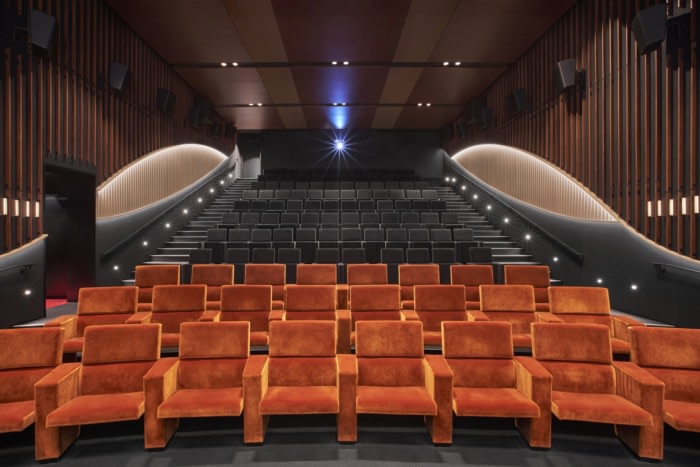
Motion Picture Association Offices – Washington DC
A workplace truly unique to the Motion Picture Association, a space inspired by motion pictures which uses both the glamour of old Hollywood and the forefront of innovation today in Washington DC.
Gensler used the allure of Hollywood to design the offices for the Motion Picture Association located in Washington DC.
Picture this: Red carpet, paparazzi flashes, lights dim, curtain drawn and the show begins. This magical experience is the new headquarters of Motion Picture Association in Washington, DC.
MPA has a deep history with this iconic brutalist building one block from the White House. For more than 50 years, the building housed a screening room to host the elite of Hollywood and Washington. Tasked with bringing the building and interiors to modern times, Gensler transformed the advocacy association into a cultural entertainment hub.
Drawing from the experience of a Hollywood premiere, the anticipation is just as important as the main event. The building’s transparent first floor connects to the streetscape and draws people into the pre-function hall.Inspired by fluidity and movement of old film reels, the team’s goal was to create a singular dynamic design that ties program spaces together, which include reception desk, theater entry, concessions and hospitality zone. A black and white backdrop provides the stage for Hollywood elegance and modern day technology to meet through a 145-foot curved champagne metal wall that replicates the movement of curtains. The architectural drapery is fabricated with undulating milled metal fins that lift to unveil a curved digital screen showcasing movie previews and dramatic fluted black and gold theater doors.To help support the large crowds, a custom acoustical stretched fabric ceiling carries throughout the hall with integrated lighting that pulsates to indicate the start of the show.
At the heart of this project, the 118-person state of the art theater is equipped with a Dolby Atmos sound system billed by Dolby as “the most significant development in cinema audio since surround-sound,” powered by 41 speakers and six subwoofers. To focus viewers towards the entertainment, two fluid lines of light comprised of classic theater inspired sconces and linear coves cuts through fabricated fins to showcase the screen. The champagne and wood fins provide a warm, holistic screening experience. For a more intimate occasion, the front rows are anchored by amber colored mohair seats, creating a special front row view for VIP guests.
A floor above, the Jack Valenti Screening Room honors his 38-year MPA presidency with a nod to the theater he created by saturating the room in Hollywood red. It’s an immersive and personal experience that enables MPA to host VIP guests before a show, and doubles as a green room and live broadcast room with BSP integration.
MPA’s location in Washington, D.C. is no accident, enabling it to advance the art and business of the motion picture industry. The workplace centers around MPA’s status as an advocate for policies that advance creativity and free speech, foster innovation in how content reaches audiences, and recognize the power of stories and those who tell them. The workplace was designed to bring the excitement of the entertainment industry to staff and guests. The entry is grounded in a literal red carpet experience, including a velvet rope and wall graphics of searchlights and paparazzi flashes. A large multipurpose room with flexible furniture opens to an artifact-filled breakout space.The backdrop of the seating area is an image of the theater printed on an acoustic veneer with integrated technology giving the visitor a glimpse into the screening experience. With this unparalleled intersection of entertainment, advocacy, and workplace, the nation’s capital has a new cultural epicenter.
Design: Gensler
Photography: Garrett Rowland
